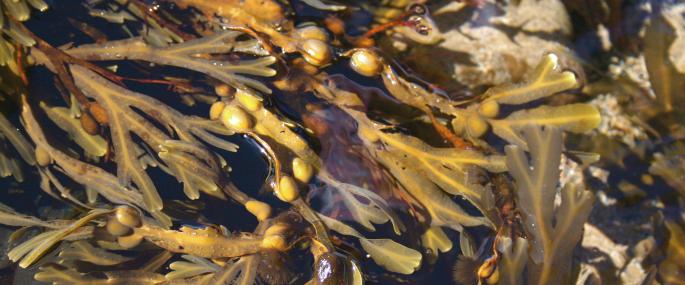Probably the seaweed which is most associated with the seashore, Bladder Wrack is a common 'wrack' seaweed which grows between the high and low water marks on rocky shores. Looking a little like dark bubblewrap, Bladder Wrack has round air bladders which allow the seaweed to float upright underwater. On exposed shores, Bladder Wrack has fewer air bladders than on sheltered shores. It can live for about four or five years.
Bladder Wrack, and other species of seaweed, support a number of epiphytes (plants that grow on other plants) and provide food and shelter for all kinds of shore creatures from grazing molluscs to tiny fish. Our seas and coastline are in need of protection if we are to keep our marine wildlife healthy. The Wildlife Trusts are working with fishermen, researchers, politicians and local people towards a vision of 'Living Seas', where marine wildlife thrives. This work has recently had a massive boost with the passing of the Marine Bill, promising sustainable development of the UK's marine environment. Do your bit for our Living Seas by supporting your local Wildlife Trust.
